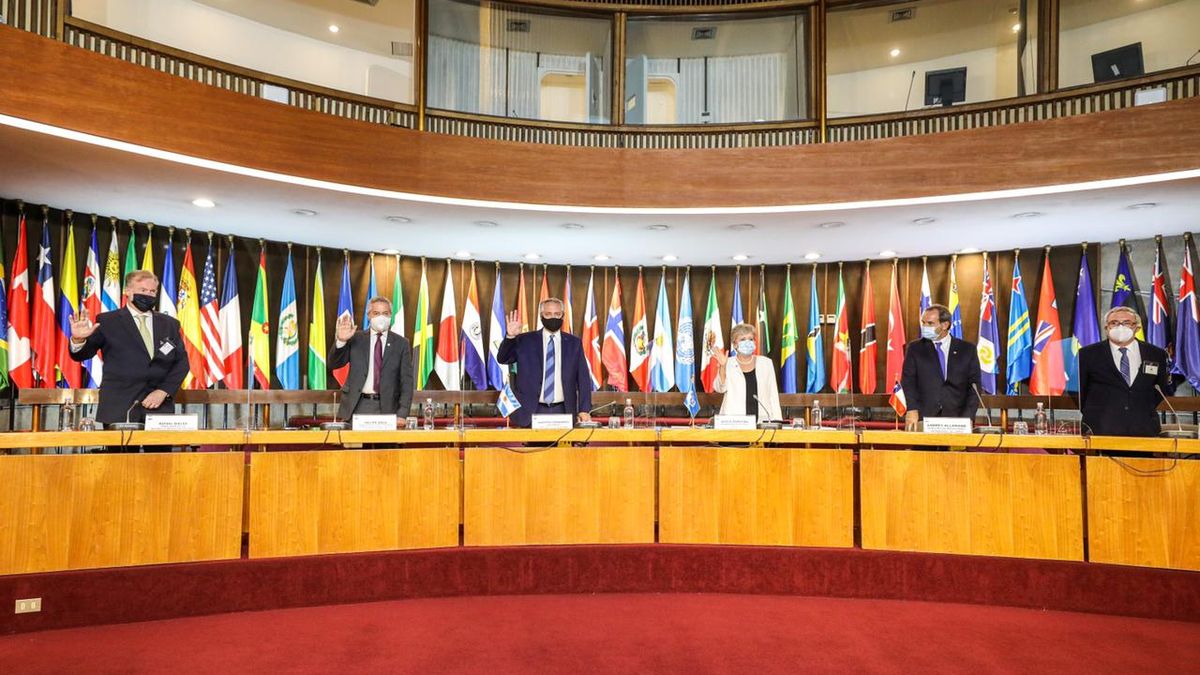The new projections are part of a document entitled Towards the transformation of the development model in Latin America and the Caribbean: production, inclusion and sustainability, which will be presented next week during ECLAC’s 39th biennial Assembly, which will meet between October 24 and 26, where the Argentina will take over the temporary presidency.
Argentina will once again host the most important biennial meeting of this United Nations regional commission, after 59 years, when the Argentine economist and father of economic development theory, Raul Prebishsecretary of said Commission, organized the summit in Mar del Plata in 1963.
Meanwhile, the projections were released this Thursday to the press by the executive secretary of ECLAC, Jose Manuel Salazar-Xirinachswho was received by the Chancellor santiago cafiero to formally sign an agreement for Argentina to host the Assembly, which will be attended by President Alberto Fernández.
These growth estimates for the region are affected by the economic crisis generated by the pandemic, from which the region did not fully emerge, and by the crises caused by the war in Ukraine (supply shock and consequent inflation).
Both ECLAC, the IMF and the World Bank revised their projections downwards and foresee a global slowdown for next year and, in particular, for Argentina, the projections are slightly more pessimistic than those of the other organizations and than the projections stipulated in the 2023 Budget project.
ECLAC forecasts an economic slowdown in 2023 for Latin America
ECLAC had anticipated on Wednesday that the slowdown in the region’s economy will accentuate in 2023, although it once again improved its growth forecast for this year, from the 2.7% estimated in August, to 3.2%.
The agency explained that in 2023 “The countries of the region will once again be faced with an unfavorable international context, in which a slowdown in both growth and global trade, higher interest rates and less global liquidity are expected,” product of the warlike conflict between Russia and Ukraine.
The war negatively affected global growth “and with it external demand” for regional products, added ECLAC, a technical agency of the United Nations, in a statement.
Latin American countries will once again face “a complex environment for fiscal and monetary policy” after the rise in interest rates in the world to contain inflation, which will have a negative impact on private consumption and investment.
All the subregions of Latin America will show lower growth next year: South America will grow 1.2% compared to 3.4% in 2022, while Central America and Mexico will grow 1.7% versus 2.5%; For its part, the Caribbean will grow 3.1%, compared to 4.3% this year.
Chile, with a 0.9% drop in its GDP, will be the most affected country in the region next year, ECLAC estimated.
According to the organization, most of the countries in the region “are particularly affected by the low dynamism of China, which is an important market for its exports of goods.”
ECLAC also highlighted the impact of “the drop in the prices of basic products and the restrictions on the space that public policy has to support economic activity.”
In the economies of Central America and Mexico, “the low dynamism of the United States, the main trading partner and main source of remittances for their countries, would affect both the external sector and private consumption,” the statement concluded.
Source: Ambito
David William is a talented author who has made a name for himself in the world of writing. He is a professional author who writes on a wide range of topics, from general interest to opinion news. David is currently working as a writer at 24 hours worlds where he brings his unique perspective and in-depth research to his articles, making them both informative and engaging.




